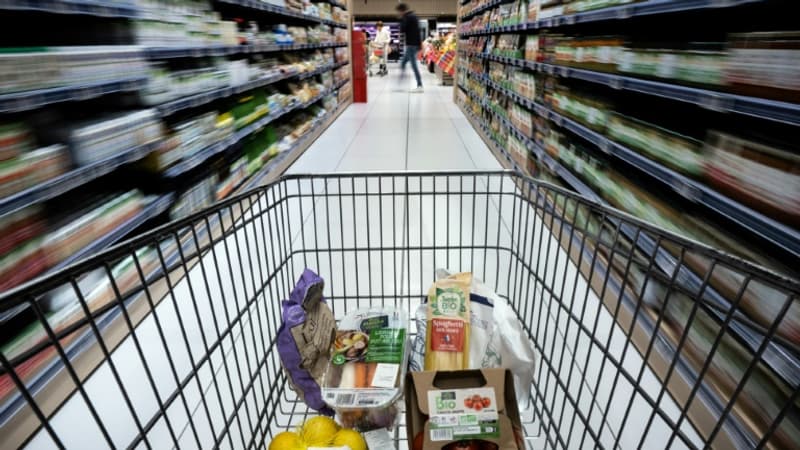The governor of the Banque de France estimated on Thursday that the price rise would lose intensity in the coming months. According to François Villeroy de Galhau, inflation could halve by the end of the year before returning to around 2% in winter 2024/25.
A daring bet? Not really. Today what pulls inflation are the prices of food products. But these futures prices will fall. A scenario in which the Governor of the Banque de France is far from the only one to count.
Manufacturers will have to lower their prices in June
At BFMTV, Thierry Cotillard, president of the Les Mousquetaires group, Intermarché’s parent company, shares the same optimism. The current drop in production costs should be reflected in the prices of the products on the shelves. Thierry Cotillard is well placed to know this, as this group manufactures some of the products sold in its supermarkets in its own factories.
This dealer, like his colleagues, wants to put pressure on manufacturers quickly. The same ones that before spring obtained an average increase of 10% in national brand products will have to readjust their prices downwards starting in June. With a congenial argument: “When prices were rising, we saw manufacturers three times to make successive increases. There, the approach is reciprocal: if it goes down, we will see each other again ”. The appointment is already made in June.
Fertilizer prices have fallen 50-60% since the 2022 peak
Because everything that had justified the increases in the prices of food products, the increase in the prices of raw materials caused by the war in Ukraine, all that is no longer relevant. We can take the example of wheat. Before the war in Ukraine, a ton sold for 250 euros. At the peak of 2022, it had taken almost 200 euros. And right now we are almost back to the pre-war level.
What is true for wheat is also true for corn. In addition, the farmers themselves are starting a new campaign with production costs that have nothing to do with those of last year. Oil is back below its pre-war level. And this is also true for fertilizers, whose prices have fallen by 50-60% compared to the 2022 peak.
Wholesale gas and electricity prices have returned to pre-war levels
What is true for agricultural production is also true for the manufacturing costs of food products. Your gas electricity bills will go down. When we look at wholesale prices, day by day developments, we see, here again, a return to pre-war prices.
For packaging, the situation is more uneven. On the side of recycled paper and cardboard, prices are falling. We also expect a decline in PET, the plastic used in particular for water bottles. The glass could see more magnification. As for wooden pallets, everything suggests that their price will stabilize. In general, high packaging prices are a thing of the past.
Cost reductions that will eventually end up on shelf labels
It is true that these various reductions in production costs will take some time to affect the prices of the products on the shelves. And for good reason, some producers were able to order, buy and store their containers when their prices were at their highest, others renewed their power contracts at a bad time. And sometimes they fight to renegotiate them. It is impossible to immediately take advantage of price drops.
However, gradually, from one end of each sector to the other, all players will find room for maneuver to lower their prices. For this reason, François Villeroy de Galhau is right in forecasting a drop in inflation for the second half of the year.
Source: BFM TV


